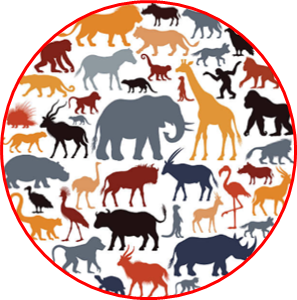Zoonoses Spillover at Wildlife-Livestock-Human Interface: One Health Control
Akshara Babu, MVSc Scholar, Guru Angad Dev Veterinary and Animal Sciences University, Punjab, India
Abstract
For countless generations, the threads of human beings, animals, and ecosystems have been carefully woven together in a lasting fabric of interconnectivity. Yet, this balance can be disrupted by the emergence of zoonotic diseases – those that leap from animals to humans – at the interface of wildlife, livestock, and human activities. These diseases primarily result due to zoonotic (from animal sources) or geographic (from disease-prone areas) spillovers. Zoonotic spillover, the transmission of diseases from animals to humans, poses a significant challenge to the global community. The dynamic interactions at the wildlife-livestock-human interface are a potential breeding ground for these diseases. Various devastating diseases like the plague, rabies, Nipah, Ebola, monkeypox, and others occur due to zoonotic spillover. However, to tackle the threat of zoonotic spillover, the comprehensive One Health strategy which unifies the health of people, animals, and the environment offers some promise. This control strategy is particularly essential given that 60% of all infectious human diseases have an animal origin.
Keywords: Zoonoses, spillover, One Health
Understanding the Interface
The convergence of wild animals, livestock, and humans creates a complex web of interactions that facilitates zoonotic spillover. Rapid urbanization and deforestation disrupt natural habitats, forcing animals into closer proximity to humans and livestock. Climate change further exacerbates the situation, altering ecosystems and potentially amplifying disease transmission. The interfaces where these three domains meet have become hotspots for zoonotic disease emergence.
The One Health Shield
One Health recognizes that the health of humans, animals, and the environment are interrelated and should be addressed jointly for the effective reduction of zoonotic diseases. In this approach, experts from many different fields work together under a single umbrella with the sole motive to prevent and control the spread of zoonotic diseases. This approach empowers us to anticipate, detect, and respond to emerging diseases by embracing collaborative efforts across disciplines. Integrated surveillance systems involving humans, animals, and the environment allow for early identification of potential outbreaks. Continued surveillance and the development of mathematical models to analyze control actions are essential to combat zoonotic spillovers. This is why the One Health approach is the ray of hope in the fight against zoonotic spillover.
Breaking the Silo
One Health dismantles the silos that have traditionally separated human and animal health disciplines. Under this, Veterinary and medical professionals, ecologists, epidemiologists, and environmental scientists can join forces, and share insights and data to enhance our understanding of disease dynamics. This interdisciplinary synergy paves the way for effective intervention strategies, which are critical in curbing zoonotic diseases at their source.
Empowering Communities
One Health empowers communities with knowledge about disease transmission, encouraging responsible practices that reduce the risk of spillover events. Education campaigns raise awareness about the safe handling of animals, appropriate land use, and the importance of vaccination. By fostering a sense of shared responsibility, One Health builds a strong defense against zoonotic threats.
Policy and Regulation
One Health surpasses research and education—it informs policy and regulation. Governments and international bodies are urged to develop and enforce regulations that minimize human-wildlife-livestock interactions. Wildlife trade, land-use planning, and farming practices are scrutinized through the lens of One Health, ensuring that all decisions prioritize the health of all three domains.
Stories that Made a Difference
The success stories of One Health are inspirational lights of progress. The containment of the Ebola, West Nile fever, Nipah, and Lyme outbreaks are a few testaments to the power of collaboration. The prevention of pandemic avian influenza transmission and the management of rabies in developing countries are other add-ons to the triumph of One Health. These victories emphasize the immense potential of One Health in mitigating zoonotic spillover risks.
Together towards a Safer Tomorrow
The One Health approach is not merely a strategy; it’s a testament to our adaptability and resilience. Through One Health, we can mend the frayed threads of our interconnectedness, reweaving the fabric of health for generations to come. The world stands at a crossroad, where the interface of wildlife, livestock, and humans can either yield pandemics or solutions. As we stand amidst the chaos, the triumph of One Health invites us forward into a world where humanity, animals, and ecosystems flourish in harmonious coexistence. Zoonotic spillover is not inevitable; it is a challenge that science, compassion, and collective action can conquer. Let us embrace the philosophy of One Health and stand united for a safer, healthier future. The journey begins with acknowledging our shared destiny and working together to protect it.





